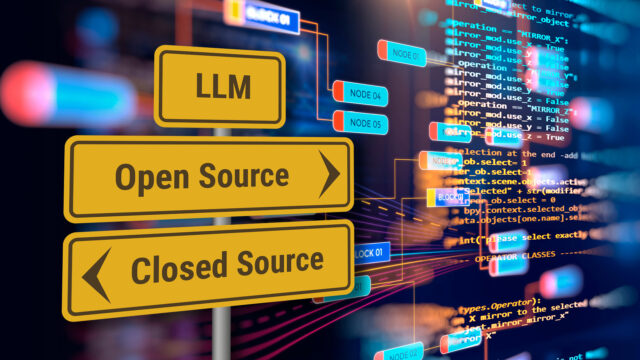Understanding the Landscape
Generative AI tools and Large Language Models (LLMs) have become the backbone of modern enterprises. Their ability to automate tasks, enhance human capabilities, and generate creative content is nothing short of revolutionary.
However, as organizations embrace this cutting-edge technology, a critical decision arises: Should they opt for open-source or closed-source models? Let’s dive into the technical nuances of both approaches and explore their pros and cons.
Closed-Source LLMs: The Enigma
What Are They? Closed-source LLMs are like well-guarded vaults. They belong to private owners who require licenses (and sometimes fees) for access.
Pros:
- User-Friendly: These models often come with published APIs and straightforward interfaces.
- Support and Maintenance: Expect expert assistance and regular updates.
- Security: Suppliers ensure compliance and data protection.
Cons:
-
- Opaque: Their inner workings remain hidden. Customization is limited.
- Cost: Licensing fees can accumulate.
- Dependency: You rely on the vendor’s roadmap.
Examples of closed-source models include OpenAI’s GPT-4, Google’s Gemini, and Anthropic’s Claude.
Open-Source LLMs: The Collaborative Playground
What Are They? Open-source models are community-driven. Their source code is accessible for all to explore, modify, and learn from.
Pros:
-
- Customization: Modify, extend, and experiment freely.
- Transparency: Understand how they work. Audit for security.
- Cost: Usually free (but consider setup and maintenance costs).
Cons:
-
- Technical Overhead: Requires expertise for deployment.
- Support: Community-driven—rely on forums and documentation.
- Security: Verify third-party contributions.
Examples of open-source models include Stable Diffusion, Meta’s llama, and Mixtral LLMs.
Choosing the Right Approach
In general, there isn’t a universally applicable solution to the debate between open and closed sources. Making the right decision for your company requires giving each of the aforementioned concerns careful thought.
However, by doing this assessment, you’ll be more likely to find the solution that best suits your requirements and position your company to take advantage of the prospects presented by generative AI.
Below, are some considerations to assist in this regard:
-
- Budget and Resources: Closed-source may be costlier upfront, but it often includes expert support. Open-source demands technical proficiency.
- Use Case: Consider scalability, compatibility, and specific business needs.
- Security and Compliance: Closed-source excels in regulated sectors; open-source offers agility.
-
- Performance: Performance could mean different things- from plausible, up-to-date and factual responses to lower latency, etc. Generally speaking, Closed-source offers higher performance due to its sheer size and diverse training However, a more recent trend of The Rise of The Small Language Models (SLMs) which shows that Open-source Small Language Models (SLMs) fair well and in some cases outperform their Closed-source counterparts. [venturebeat.com]
How Dell Technologies can Assist
As part of Dell Technologies latest offer of Dell AI Factory with NVIDIA, our professional services can guide customers through the entire AI journey no matter where they are and regardless of their skill level. Part of this offering include assistance in preparing the dataset to make it AI ready as well as helping customers to choose which LLM fits perfectly with their strategy and use case. Not only does this mean selecting the right model’s type and size, but also whether open or closed-source will be a better fit.


